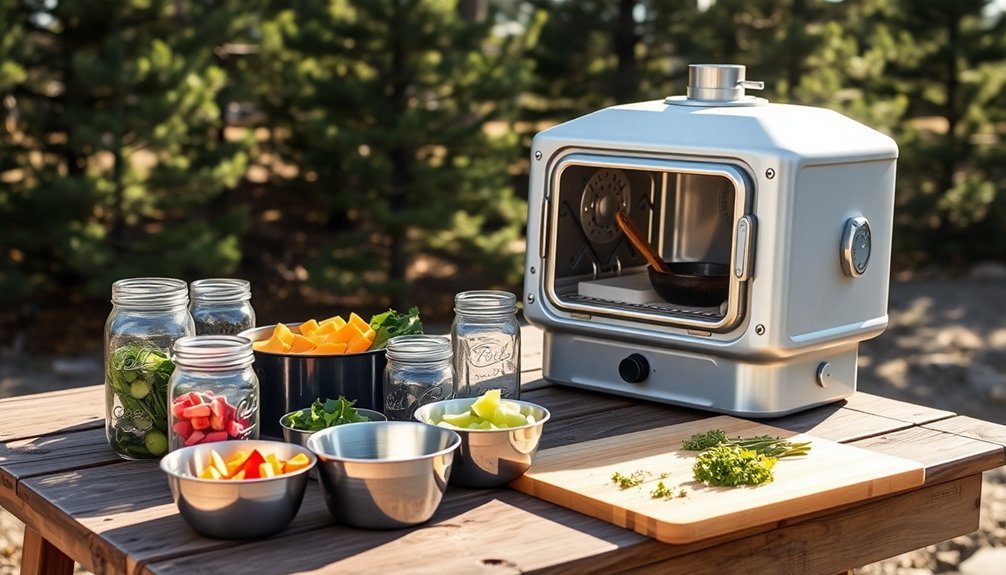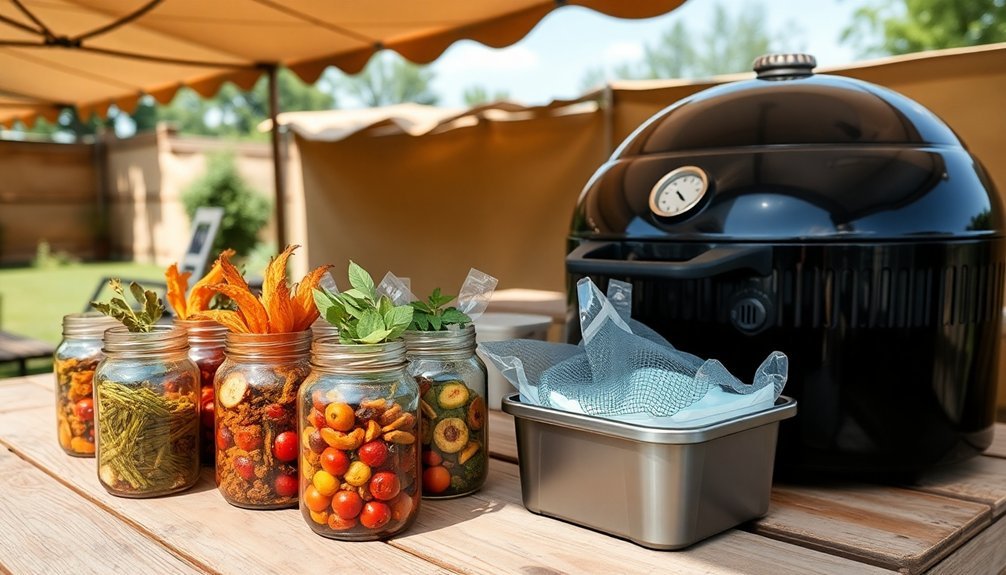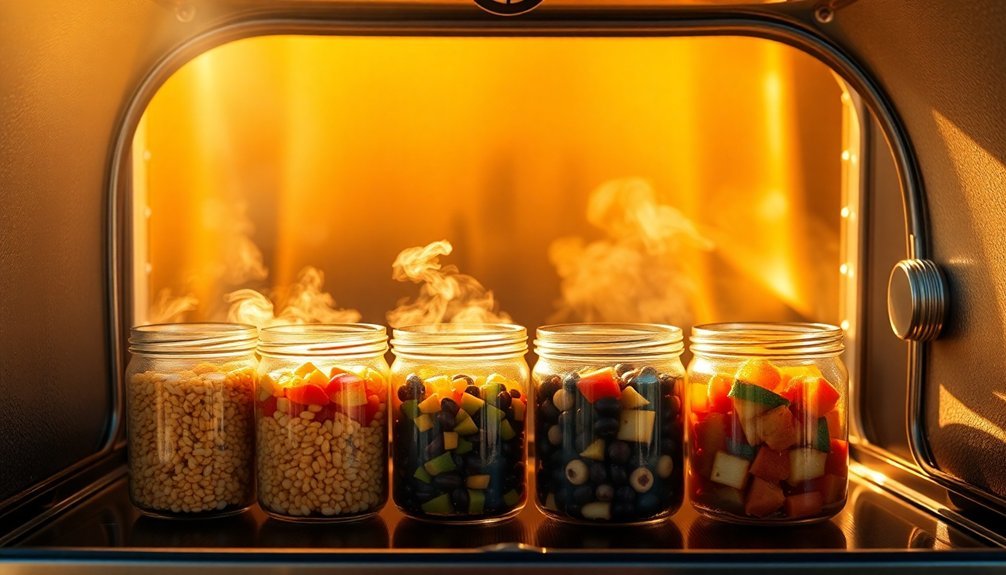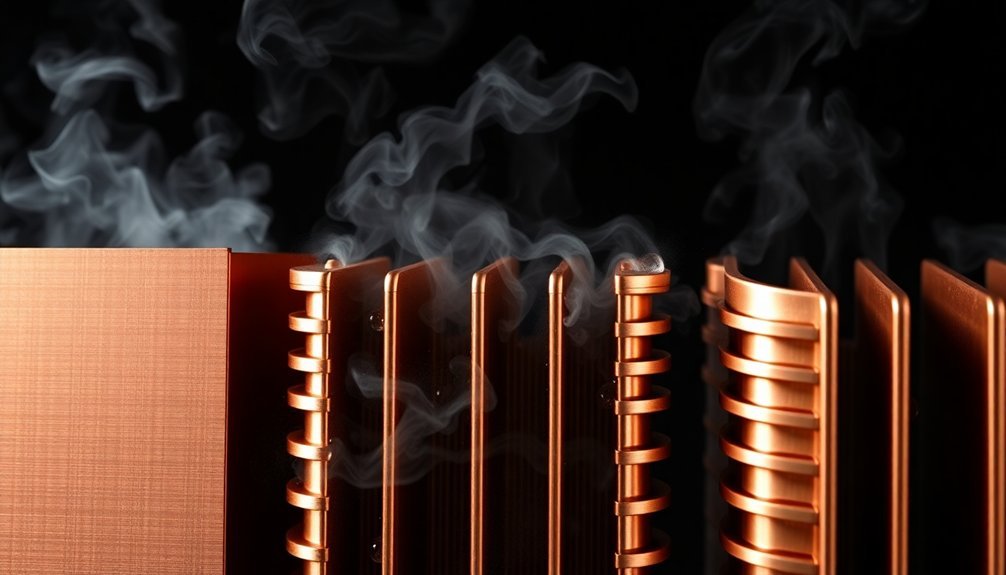Make outdoor meal prep a breeze with three smart strategies. First, set up an efficient solar kitchen station in a level, wind-protected area with full sun exposure, keeping your cooking supplies within easy reach. Second, maximize your cooking time by batch-preparing multiple dishes – start with proteins and grains that take longer to cook, while pre-chopping vegetables and measuring spices in advance. Third, store your sun-baked meals safely using proper temperature control and strategic cooler packing. These proven techniques will transform your outdoor cooking experience, and there's even more to discover about mastering the art of solar cuisine.
Assembling Your Solar Kitchen Station

Before you can harness the sun's power for cooking, you'll need to set up a proper solar kitchen station with essential components. Start by selecting a level, wind-protected location that receives direct sunlight throughout the day. Make sure you have easy access to your cooking supplies and ingredients. Having the right organizational setup will help you create efficient meal prep sessions outdoors.
Your solar cooker needs four key elements: a black target or absorber to convert sunlight into heat, reflective panels to concentrate sunlight, proper insulation to maintain cooking temperatures, and a cooking chamber.
Whether you're using a box, panel, parabolic, or evacuated tube cooker, follow the manufacturer's assembly instructions carefully. Check that all reflectors are securely fastened, insulation is gap-free, and the cooking chamber's dark interior is ready to distribute heat evenly.
Pre-Cook Multiple Dishes Together
When planning to cook multiple dishes outdoors, maximizing your cooking efficiency becomes essential for a successful meal prep experience. Start by focusing on ingredients that take longest to cook, like proteins and whole grains, while simultaneously preparing other components.
You'll want to use your cast-iron skillet or dutch oven to handle multiple dishes efficiently. Pre-chop your vegetables at home and store them in resealable bags to save time at the campsite. Measure your spices into small containers before leaving, and consider pre-cooking certain items like chili or stew that you can easily reheat over the campfire.
Create a multi-level fire with both direct and indirect heat zones, allowing you to cook different dishes at varying temperatures simultaneously. This strategy helps you maintain a steady workflow while preparing multiple meals. Having a simple recipe list will help you stay organized and focused while managing multiple dishes outdoors.
Storing Sun-Baked Meals Properly

Proper storage of sun-baked meals guarantees both food safety and meal prep success during outdoor cooking adventures.
You'll need to keep your prepared dishes at the right temperature to prevent bacterial growth. Never leave food in the danger zone (40°F-140°F) for more than 2 hours, or 1 hour if it's above 90°F outside.
Using a food thermometer is essential for ensuring your grilled foods reach safe internal temperatures. Store your prepped meals in separate coolers from beverages to minimize lid opening.
Pack your cooler strategically by placing raw meats at the bottom and using plenty of ice. You can extend your cooler's effectiveness by partially burying it in sand, covering it with blankets, or placing it under shade.
Replace melted ice promptly and use insulated containers for hot foods.
Always use clean utensils and plates when serving to prevent cross-contamination.
Frequently Asked Questions
How Do You Maintain Food Temperature When Camping in Extreme Weather Conditions?
You'll need to pre-chill coolers, use block ice, keep them shaded, and monitor temperatures regularly. Don't forget to insulate with blankets and minimize lid openings during extreme weather to maintain safe temperatures.
What Are Safe Alternatives When Campfires Are Banned During Fire Restrictions?
You can use portable camping stoves, solar cookers, or opt for pre-cooked meals that don't require heating. These alternatives are safe, fire-restriction compliant, and guarantee you'll still enjoy nutritious meals during your outdoor adventures.
How Long Can Fresh Ingredients Last in a Camping Cooler?
You'll need to monitor your cooler's temperature closely. Hard cheeses and citrus fruits can last a week, while raw meats only last 2 days. Keep everything below 40°F and store items properly.
Which Meals Are Best for Backpacking Trips With Limited Carrying Capacity?
You'll want lightweight, high-calorie options like Stinger waffles, Carnation Breakfast, and Thai Peanut Noodles. They're compact but energy-dense, making them perfect for backpacking when space is limited.
What Backup Cooking Methods Should You Plan for During Rainy Weather?
You'll want to pack a canister stove, steaming equipment, and meals that require minimal cooking. Keep cold food options ready and use cooking en papillote methods under a tarp for rainy weather protection.
In Summary
You'll find outdoor meal prep liberating once you've mastered these solar cooking techniques. By setting up an efficient station, batch cooking multiple dishes, and storing your sun-baked creations properly, you're ready to harness nature's power for sustainable cooking. Whether you're camping, prepping for emergencies, or simply enjoying outdoor living, these methods will transform how you think about meal preparation beyond your indoor kitchen.




Leave a Reply